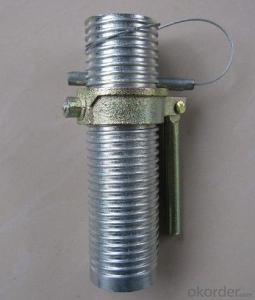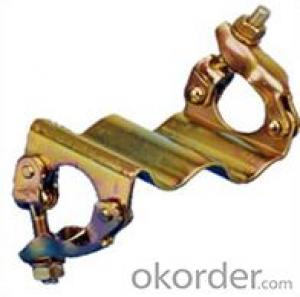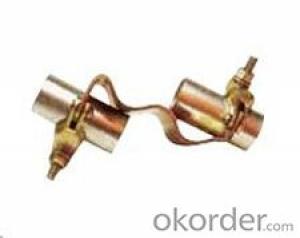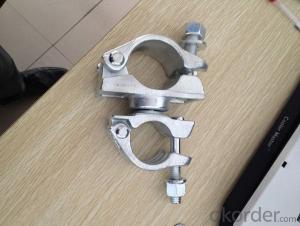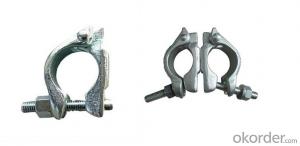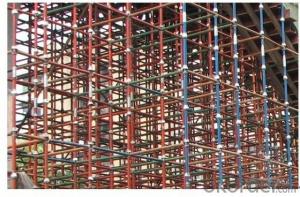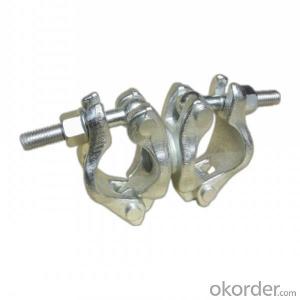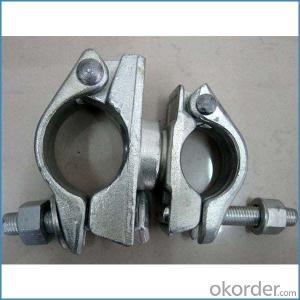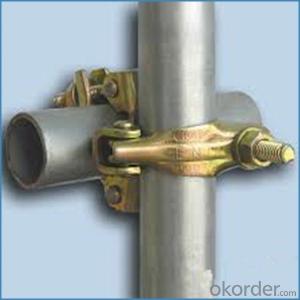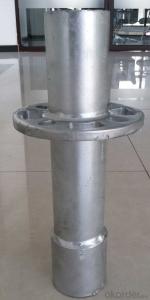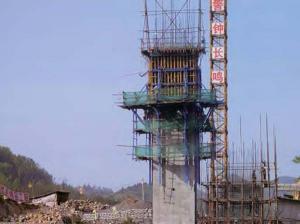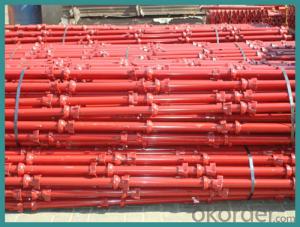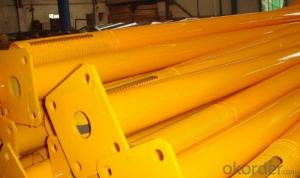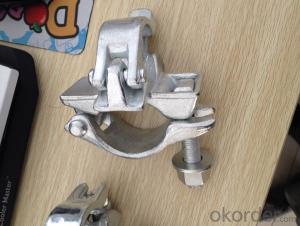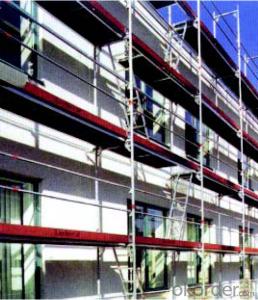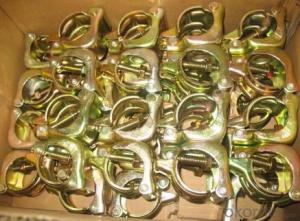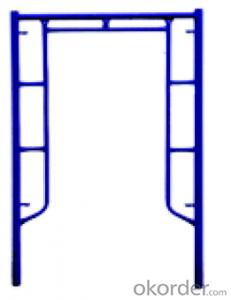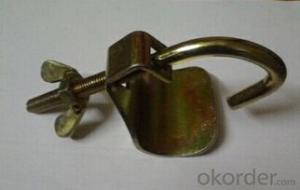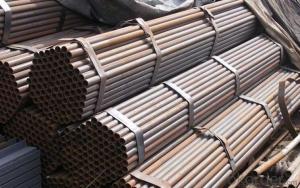Construction Support System High Strength Scaffolding Steel Props
- Loading Port:
- Tianjin
- Payment Terms:
- TT OR LC
- Min Order Qty:
- 10000 PCS
- Supply Capability:
- 10000 PCS/month
OKorder Service Pledge
OKorder Financial Service
You Might Also Like
Quick Details
| Material: | Steel | Type: | Heavy Duty and Light Duty | Surface: | Galvanized, Painted, HDG, Powder Coated |
| Package: | Pallets or as Customer's Requirements | Delivery Time: | 25days | Custom Made: | Available |
Packaging & Delivery
| Packaging Detail: | Pallets or As Customer's Requirements |
| Delivery Detail: | 25 Days |
Specifications
1.Manufacturer
2.Heavy and Light Duty
3.Material: Steel
4.Surface: Galvanized or HDG or Painted or Powder Coated
Product Description
Details:
OEM Service is offered
Stable and Durable
High Strength
Material: Steel
Type: Heavy Duty and Light Duty
Surface : Galvanized or HDG or Painted or Powder Coated
Package : Pallets or As Customer's Requirements
Delivery Time: 25days
Custom Made: Available
1. We are experienced manufacturer in Hebei with more than 4 years experience and cooperating with more many countries.
2. We supply qualified products which are certified by SGS and ISO9001:2008. Strict QC to make sure your profit.
3. Timely delivery can be guaranteed because we have a factory which covers an area of 30000sqm and its daily output is more than 50 tons.
4. A competitive price can be offered because we are a professional manufacturer of scaffolding with an advantage on cost-controlling & production management.
Our main products include formwork system, concrete machine, racking system, all kinds of scaffolding system, scaffolding accessories, and etc.
- Q: What are steel tube couplers and how are they used in scaffolding?
- Steel tube couplers are connecting devices used in scaffolding to join two steel tubes together securely. They are typically made of high-quality steel and come in various types, such as sleeve couplers, swivel couplers, putlog couplers, and girder couplers. The primary purpose of steel tube couplers in scaffolding is to provide a strong and reliable connection between two tubes, ensuring the stability and safety of the scaffold structure. These couplers are designed to withstand heavy loads and prevent any movement or separation between the tubes. In scaffolding construction, steel tube couplers are used to create different configurations and connections. For example, sleeve couplers are commonly used to connect two tubes end-to-end, forming a longer vertical or horizontal member. Swivel couplers, on the other hand, are used to create angled connections, enabling scaffolding to be set up on uneven or sloping surfaces. Putlog couplers are used to attach scaffold boards or planks to the main scaffold structure, providing a stable platform for workers. Girder couplers are specifically designed to connect steel beams or girders to the scaffold, allowing for the construction of larger and more complex scaffolding systems. Overall, steel tube couplers play a crucial role in the construction industry, providing a secure and durable connection between steel tubes in scaffolding. They ensure the strength and stability of the scaffold structure, enabling workers to safely access and work at elevated heights.
- Q: Can steel tube couplers be used for creating cantilevered or suspended scaffolding structures?
- Yes, steel tube couplers can be used for creating cantilevered or suspended scaffolding structures. Steel tube couplers are commonly used in scaffolding systems to connect tubes together, providing a secure and stable framework for construction work. Cantilevered or suspended scaffolding structures require additional support and stability due to their unique design, and steel tube couplers can effectively meet these requirements. By securely connecting the steel tubes, the couplers ensure that the scaffolding structure remains strong and safe for workers. Additionally, steel tube couplers are versatile and can be easily adjusted or repositioned to accommodate the specific needs of a cantilevered or suspended scaffolding structure. Overall, steel tube couplers are a reliable and suitable choice for creating such scaffolding structures.
- Q: I have looked for months with no luck.
- Try any industrial supply stores as listed on the web or in industrial supply catalogs.
- Q: In Chapter 23 the author writes of a final scaffold scene. What is the significance of this scene? Does the scene provide a satisfying climax for you? Why or why not?
- well it's pretty significant. Dimmesdale finally tells the world of his sin and thus lets go of the weight on his heart and dies. Chillingworth lived only to destroy Dimmesdale, and so Chillingworth has nothing left to live for after Dimmesdale dies. His health deteriorates and he finally dies to, leaving everything to Hester and Pearl. I thought it was a pretty satifying climax. It's full of subtle metaphors and hidden meanings.
- Q: Which pro-construction construction fastener type steel pipe scaffolding safety technical specifications . you can send a not? @ Com ,,, to the whole,
- Wooden easel cheap, Jinhu Tam Hong Kong Fan Fan visit the poem is a good way to carry, it is recommended to buy metal, like the late out of the painting and exams are good to carry. Also, to buy a good point, like David's good, more than thirty, more wealthy can buy Marley, one hundred and six or so, if you can buy a studio to buy a wooden
- Q: 1. Explain how the Hangman and the scaffold represent Hitler and his rise to power.2. Explain the poem when the Hangman could have been stopped.
- 1.The Hangman came to town and started hanging people on the scaffold and the people of the town only stood there and watched with fear, not stopping him. The scaffold grew day by day just like Hitler and his gas chambers. Hitler's antisemitism began slowly with making Jews wear the yellow star and creating unfair laws that forbid Jews to do lots of stuff. Then eventually, Hitler started destroying Jews with gas chambers and the amount just seemed to multiply day by day.
- Q: Are steel tube couplers compatible with scaffolding systems using different tube lengths?
- Scaffolding systems that utilize different tube lengths can typically be paired with steel tube couplers. The purpose of these couplers is to securely connect the tubes used in scaffolding systems. They are designed to accommodate various tube sizes and lengths, allowing for adaptability and versatility in the construction of scaffolding. When using steel tube couplers with scaffolding systems that have varying tube lengths, it is crucial to consider the size and strength of the couplers. This ensures that they can handle the load and maintain the stability of the structure. Selecting couplers that are compatible with the specific tube sizes and lengths used in the scaffolding system is of utmost importance. In some instances, additional measures may be necessary. This includes using adjustable couplers or providing extra support to account for the different tube lengths. Following the manufacturer's guidelines and specifications for the couplers is also essential to ensure the safe and reliable construction of the scaffolding. In conclusion, by choosing the appropriate couplers and installing them correctly, steel tube couplers can be compatible with scaffolding systems that use different tube lengths. They provide the necessary structural integrity and stability required for safe and efficient construction projects.
- Q: How do steel tube couplers contribute to the versatility of a scaffolding system?
- Steel tube couplers play a crucial role in enhancing the versatility of a scaffolding system. These couplers are specially designed to connect and secure the steel tubes used in scaffolding structures, providing a strong and stable platform for construction and maintenance work. Firstly, steel tube couplers allow for easy and quick assembly and disassembly of scaffolding systems. The couplers are designed to be easily tightened or loosened using basic hand tools, enabling workers to swiftly adjust the scaffolding height and configuration as needed. This flexibility makes it possible to adapt the scaffolding system to different job requirements, ensuring efficient and seamless workflow. Furthermore, steel tube couplers provide a secure and reliable connection between the steel tubes, ensuring the overall stability and safety of the scaffolding structure. The couplers are designed to hold the tubes firmly in place, preventing any movement or slippage during use. This is particularly important in ensuring the safety of workers who rely on the scaffolding system while performing their tasks at various heights. Steel tube couplers also allow for the creation of complex scaffolding structures. By connecting multiple tubes at different angles and positions, couplers enable the construction of scaffolding systems that can adapt to the specific needs of a project. Whether it is a straight, angled, or curved configuration, the versatility provided by the couplers allows for the creation of customized scaffolding designs that can accommodate various architectural or construction challenges. Moreover, the use of steel tube couplers eliminates the need for welding or specialized tools, making it easier and more cost-effective to assemble and modify scaffolding systems. The couplers can be easily removed and reused, reducing material waste and saving both time and money. Overall, steel tube couplers significantly contribute to the versatility of a scaffolding system by enabling easy assembly and disassembly, providing a secure connection, allowing for complex structures, and offering a cost-effective solution. Their role in enhancing the adaptability and efficiency of scaffolding makes them an essential component in the construction and maintenance industry.
- Q: deflection of scaffold plank is ok if it doesn't exceed 1/60th the overall span?
- I'm missing some information. How much do you weigh, how far is the plank extended from the deck of the ship, and what are the mechnical characteristics of the plank?
- Q: Are steel tube couplers adjustable to accommodate different scaffold configurations?
- Yes, steel tube couplers are adjustable to accommodate different scaffold configurations. These couplers are designed to securely connect steel tubes and can be tightened or loosened as needed to fit various scaffold setups.
Send your message to us
Construction Support System High Strength Scaffolding Steel Props
- Loading Port:
- Tianjin
- Payment Terms:
- TT OR LC
- Min Order Qty:
- 10000 PCS
- Supply Capability:
- 10000 PCS/month
OKorder Service Pledge
OKorder Financial Service
Similar products
Hot products
Hot Searches
Related keywords
